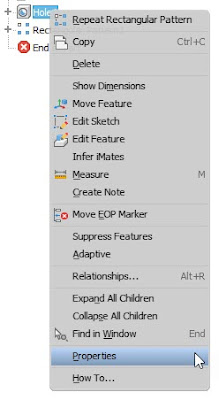Last week, I had a support call that the solution ended up being a familiar, yet relatively unused function of Inventor. I had already been using Inventor for years before I found it and I am not sure how many users even know about it. I am talking about Conditional Suppression of the Feature Properties.
Inventor Feature Properties users access to several different properties of a given feature in the browser. It will allow a user to change the name of the feature, create some conditional suppression, enable or disable certain Adaptive elements, and change the appearance of the feature.
In this case, I want to focus on the conditional suppression options. These allow a user to create conditional suppression of a feature based on the value of a parameter. You might say, I can already do that with iLogic. This is true, however, iLogic requires a certain level of comfort with writing VB.net code. Inventor Feature Properties don't require any code and offer an alternative to users that are intimidated by iLogic.
The premise is really simple, you can access the dialog by right-clicking on a feature in the browser.

